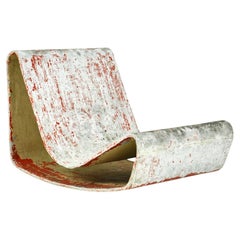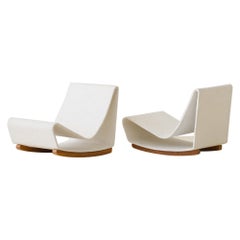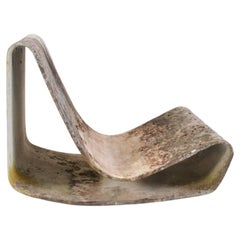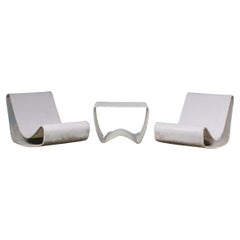Mid-20th Century Cement Lounge Chairs
Vintage 1950s Swiss Mid-Century Modern Armchairs
Concrete, Cement
Vintage 1950s Brazilian Mid-Century Modern Lounge Chairs
Cement
Recent Sales
Vintage 1950s European Lounge Chairs
Cement
Vintage 1950s Swiss Lounge Chairs
Cement
Vintage 1950s Brazilian Mid-Century Modern Lounge Chairs
Cement
Vintage 1950s Swiss Mid-Century Modern Lounge Chairs
Cement
Mid-20th Century Swiss Mid-Century Modern Chairs
Cement
Vintage 1950s Swiss Mid-Century Modern Lounge Chairs
Cement
Vintage 1950s Brazilian Mid-Century Modern Lounge Chairs
Cement
Mid-20th Century Swiss Mid-Century Modern Lounge Chairs
Cement
Vintage 1950s Brazilian Mid-Century Modern Lounge Chairs
Cement
Mid-20th Century European Brutalist Chairs
Cement
Vintage 1950s Brazilian Mid-Century Modern Lounge Chairs
Cement
Mid-20th Century Swiss Mid-Century Modern Lounge Chairs
Cement
Vintage 1950s Brazilian Mid-Century Modern Lounge Chairs
Cement
Vintage 1960s Swiss Mid-Century Modern Lounge Chairs
Cement
Vintage 1950s Swiss Mid-Century Modern Lounge Chairs
Cement
Vintage 1950s Swiss Mid-Century Modern Lounge Chairs
Cement
People Also Browsed
Mid-20th Century French Mid-Century Modern Wall Lights and Sconces
Iron
Vintage 1930s Czech Art Deco Lounge Chairs
Beech, Sheepskin
2010s South African Minimalist Pedestals
Burl, Poplar, Wood
Vintage 1950s French Mid-Century Modern Stools
Wrought Iron
2010s American Scandinavian Modern Chandeliers and Pendants
Other
Early 2000s Swiss End Tables
Cement
Mid-20th Century Brazilian Mid-Century Modern Sofas
Chrome
2010s Mexican Post-Modern Side Tables
Onyx
2010s American Modern Stools
Wood, Oak
2010s American Modern Table Lamps
Marble, Brass
2010s Italian Modern Wall Lights and Sconces
Alabaster, Brass
21st Century and Contemporary German Mid-Century Modern Chandeliers and ...
Metal, Iron
2010s American Organic Modern Coffee and Cocktail Tables
Hardwood, Walnut
1990s Swedish Scandinavian Modern Chaise Longues
Wicker, Rattan
21st Century and Contemporary French Console Tables
Steel
2010s Austrian Jugendstil Chandeliers and Pendants
Silk
Mid-20th Century Cement Lounge Chairs For Sale on 1stDibs
How Much are Mid-20th Century Cement Lounge Chairs?
Willy Guhl for sale on 1stDibs
Decades prior to the mass popularity of neo-industrial cement floors and furniture taking shape, there was Willy Guhl. The Swiss creative is considered one of the first “industrial” designers in his home country. He pioneered a rugged, organic style of modern furniture and decor — stylish planters, shapely seating and lots more — that remains widely coveted by many today.
Guhl was born in 1915 in Stein am Rhein and worked as a carpenter before beginning studies at the Zurich School of Applied Arts (known today as the Zurich University of the Arts), where he would go on to teach for nearly 40 years.
While Guhl is well-known for his range of provocative garden elements as well as his patio and outdoor furniture, today’s legion of mid-century modern enthusiasts are likely familiar with the designer’s iconic Loop chair (introduced in 1954). For this sculptural seat and other furnishings, Guhl tended toward industrial materials, which he bent and shaped into organic forms for a striking juxtaposition. Much of his work is crafted from either concrete or Eternit, a mixture of cement and asbestos developed by the Belgian company Etex, which, in the 1950s, commissioned Guhl and his students at the School of Applied Arts to conceive planters in the material. The resulting vessels — some hourglass-shaped, some in the form of handkerchiefs, all suitable for indoors or exteriors — remain some of Guhl’s most collectible pieces.
Guhl’s affiliation with the Swiss “neo-functional” movement centered on the idea of simplifying design without sacrificing form. According to Guhl, his mission was “achieving the most with the minimum of effort.”
In addition to his work as a designer, Guhl left his mark on subsequent creatives through his 39-year tenure at his alma mater, where he was instructor to the likes of Robert Haussmann, Kurt Thut and Bruno Rey. Modern-day shoppers at IKEA owe Guhl a debt of gratitude too. He was an early advocate of flat-pack furniture, championing its ability to make good design more widely accessible.
At its core, though, Guhl’s work was inherently human-centric: “At the center of my efforts, I put people and their living requirements,” he once said. “My products must be useful to people.” Guhl died in 2004 at the age of 89.
Find a range of vintage Willy Guhl furniture and decorative objects on 1stDibs.
A Close Look at Mid-century Modern Furniture
Organically shaped, clean-lined and elegantly simple are three terms that well describe vintage mid-century modern furniture. The style, which emerged primarily in the years following World War II, is characterized by pieces that were conceived and made in an energetic, optimistic spirit by creators who believed that good design was an essential part of good living.
ORIGINS OF MID-CENTURY MODERN FURNITURE DESIGN
- Emerged during the mid-20th century
- Informed by European modernism, Bauhaus, International style, Scandinavian modernism and Frank Lloyd Wright’s architecture
- A heyday of innovation in postwar America
- Experimentation with new ideas, new materials and new forms flourished in Scandinavia, Italy, the former Czechoslovakia and elsewhere in Europe
CHARACTERISTICS OF MID-CENTURY MODERN FURNITURE DESIGN
- Simplicity, organic forms, clean lines
- A blend of neutral and bold Pop art colors
- Use of natural and man-made materials — alluring woods such as teak, rosewood and oak; steel, fiberglass and molded plywood
- Light-filled spaces with colorful upholstery
- Glass walls and an emphasis on the outdoors
- Promotion of functionality
MID-CENTURY MODERN FURNITURE DESIGNERS TO KNOW
- Charles and Ray Eames
- Eero Saarinen
- Milo Baughman
- Florence Knoll
- Harry Bertoia
- Isamu Noguchi
- George Nelson
- Danish modernists Hans Wegner and Arne Jacobsen, whose emphasis on natural materials and craftsmanship influenced American designers and vice versa
ICONIC MID-CENTURY MODERN FURNITURE DESIGNS
- Eames lounge chair
- Nelson daybed
- Florence Knoll sofa
- Egg chair
- Womb chair
- Noguchi coffee table
- Barcelona chair
VINTAGE MID-CENTURY MODERN FURNITURE ON 1STDIBS
The mid-century modern era saw leagues of postwar American architects and designers animated by new ideas and new technology. The lean, functionalist International-style architecture of Le Corbusier and Bauhaus eminences Ludwig Mies van der Rohe and Walter Gropius had been promoted in the United States during the 1930s by Philip Johnson and others. New building techniques, such as “post-and-beam” construction, allowed the International-style schemes to be realized on a small scale in open-plan houses with long walls of glass.
Materials developed for wartime use became available for domestic goods and were incorporated into mid-century modern furniture designs. Charles and Ray Eames and Eero Saarinen, who had experimented extensively with molded plywood, eagerly embraced fiberglass for pieces such as the La Chaise and the Womb chair, respectively.
Architect, writer and designer George Nelson created with his team shades for the Bubble lamp using a new translucent polymer skin and, as design director at Herman Miller, recruited the Eameses, Alexander Girard and others for projects at the legendary Michigan furniture manufacturer.
Harry Bertoia and Isamu Noguchi devised chairs and tables built of wire mesh and wire struts. Materials were repurposed too: The Danish-born designer Jens Risom created a line of chairs using surplus parachute straps for webbed seats and backrests.
The Risom lounge chair was among the first pieces of furniture commissioned and produced by celebrated manufacturer Knoll, a chief influencer in the rise of modern design in the United States, thanks to the work of Florence Knoll, the pioneering architect and designer who made the firm a leader in its field. The seating that Knoll created for office spaces — as well as pieces designed by Florence initially for commercial clients — soon became desirable for the home.
As the demand for casual, uncluttered furnishings grew, more mid-century furniture designers caught the spirit.
Classically oriented creators such as Edward Wormley, house designer for Dunbar Inc., offered such pieces as the sinuous Listen to Me chaise; the British expatriate T.H. Robsjohn-Gibbings switched gears, creating items such as the tiered, biomorphic Mesa table. There were Young Turks such as Paul McCobb, who designed holistic groups of sleek, blond wood furniture, and Milo Baughman, who espoused a West Coast aesthetic in minimalist teak dining tables and lushly upholstered chairs and sofas with angular steel frames.
Generations turn over, and mid-century modern remains arguably the most popular style going. As the collection of vintage mid-century modern chairs, dressers, coffee tables and other furniture for the living room, dining room, bedroom and elsewhere on 1stDibs demonstrates, this period saw one of the most delightful and dramatic flowerings of creativity in design history.
Finding the Right Lounge Chairs for You
While this specific seating is known to all for its comfort and familiar form, the history of how your favorite antique or vintage lounge chair came to be is slightly more ambiguous.
Although there are rare armchairs dating back as far as the 17th century, some believe that the origins of the first official “lounge chair” are tied to Hungarian modernist designer-architect Marcel Breuer. Sure, Breuer wasn’t exactly reinventing the wheel when he introduced the Wassily lounge chair in 1925, but his seat was indeed revolutionary for its integration of bent tubular steel.
Officially, a lounge chair is simply defined as a “comfortable armchair,” which allows for the shape and material of the furnishings to be extremely diverse. Whether or not chaise longues make the cut for this category is a matter of frequent debate.
The Eames lounge chair, on the other hand, has come to define somewhat of a universal perception of what a lounge chair can be. Introduced in 1956, the Eames lounger (and its partner in cozy, the ottoman) quickly became staples in television shows, prestigious office buildings and sumptuous living rooms. Venerable American mid-century modern designers Charles and Ray Eames intended for it to be the peak of luxury, which they knew meant taking furniture to the next level of style and comfort. Their chair inspired many modern interpretations of the lounge — as well as numerous copies.
On 1stDibs, find a broad range of unique lounge chairs that includes everything from antique Victorian-era seating to vintage mid-century modern lounge chairs by craftspersons such as Hans Wegner to contemporary choices from today’s innovative designers.



